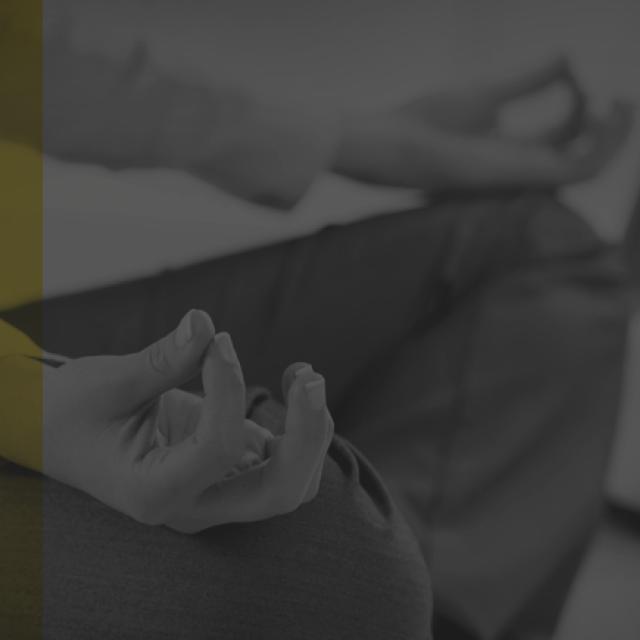Yoga at work: the best way to balance body and mind
Last updated on May 16th, 2018

A number of companies offer sports and wellbeing activities in the workplace. It helps employees stay in shape and allows them to socialize in an informal setting while taking a break.
More and more people (including several Promutuel Insurance employees) are trying yoga, yoga nidra (relaxation), and meditation.To find out more about the benefits of these practices in the workplace, we talked to Chantale Julien, a yoga, meditation, and yoga nidra instructor.
Q. In general, what are the needs of companies who contact you?
A. Quite often they call me at the request of their employees. They’re looking for a way to help their staff feel better, manage their stress, and improve their productivity.
The employees want take part in a fun activity that’s good for them, helps them reduce stress and tension in the body and increases their concentration. And that’s exactly what yoga, meditation, and yoga nidra do!
Q. Who can benefit from yoga in the workplace?
A. Yoga is adaptable. It’s for everyone—managers and employees alike. Athletic people who already exercise outside of work may find it less beneficial. My clients are mostly parents since you don’t need to be in any particular shape to do yoga and I teach classes during the day. Which is handy because the evenings are usually really busy!
Q. You teach yoga, meditation, and yoga nidra classes. What are the differences between the three practices?

R. Hatha yoga involves physical movements while standing and sitting, combined with breathing exercises. Hatha yoga helps you stay flexible, increase your strength and maintain a healthy balance between body and mind.

Meditation is practiced while sitting still. It helps you develop your inner consciousness and to be present in the moment, which isn’t always easy to do these days! I lead guided meditation sessions.

Yoga nidra, sometimes called yogic sleep, is mainly practiced lying on a mat. We practice a few hatha yoga movements at the beginning of class to prepare the body and mind to relax. The sessions continue with guided relaxation and visualization exercises to help you sleep better at night and concentrate during the day. Yoga nidra works quickly. People who practice it soon see improvements in their memory, concentration, and quality of sleep. It’s very popular because the results can be felt almost right away.
Q. What advice would you give a person who wants to start doing yoga outside of work?
- R. Choose a teacher who is certified by Fédération francophone de yoga or Yoga Alliance Canada.
- Go to a yoga studio that’s recognized by these organizations.
- Do some research on the school, classes, and clientele beforehand.
- Try three or four different classes before signing up. There are dozens of different types of yoga—hatha yoga, vinyasa yoga, hot yoga, ashtanga yoga, and much more. So there really is something for everyone.
- Start with the basics. Find a yoga class for beginners.
- Stick with it! Yoga is different from other activities we’re used to doing. You need to take three or four classes to feel comfortable. We're always looking for fast results. Yoga is different! It takes time to get used to it.
Thanks to yoga, meditation, and yoga nidra instructor Chantale Julien for her time.
Do you practice a sport or other physical activity for your wellbeing at work?



